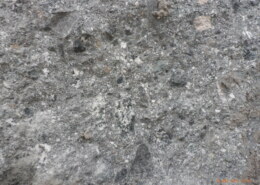
Hi, would anyone by chance know what is the conglomerate in the attached picture? Any additional information regarding notable minerals and origin is warmley welcomed. Regards
Sign up to join our community!
Lost your password? Please enter your email address. You will receive a link and will create a new password via email.
Please briefly explain why you feel this question should be reported.
Please briefly explain why you feel this answer should be reported.
Please briefly explain why you feel this user should be reported.

Hi, would anyone by chance know what is the conglomerate in the attached picture? Any additional information regarding notable minerals and origin is warmley welcomed. Regards
Pyrite is a type of iron sulfide mineral that forms in a variety of geometric shapes due to its unique crystal structure and formation process. The formation of pyrite can be attributed to the following factors: 1. Crystal structure: Pyrite has a cubic crystal structure, which is characterized by aRead more
Pyrite is a type of iron sulfide mineral that forms in a variety of geometric shapes due to its unique crystal structure and formation process. The formation of pyrite can be attributed to the following factors:
1. Crystal structure: Pyrite has a cubic crystal structure, which is characterized by a face-centered cubic (FCC) arrangement of atoms. This structure leads to the formation of six-sided, equilateral pyramids, which are the building blocks of the mineral. These pyramids stack together to create the geometric shapes of pyrite, such as cubes, octahedra, and dodecahedra.
2. Formation process: Pyrite forms through a process called replacement reaction, where it replaces other miner
als in the Earth’s crust. This process often occurs in the presence of water and oxygen, which can promote the formation of pyrite’s distinct geometric shapes.
3. Environmental conditions: Pyrite can form in various environments, including sedimentary, hydrothermal, and oxidized settings. These different environments can influence the size, shape, and arrangement of pyrite crystals, leading to the formation of unique geometric structures.
In summary, the formation of pyrite is geometrical due to its unique crystal structure, the replacement reaction process, and the influence of environmental conditions.
See less